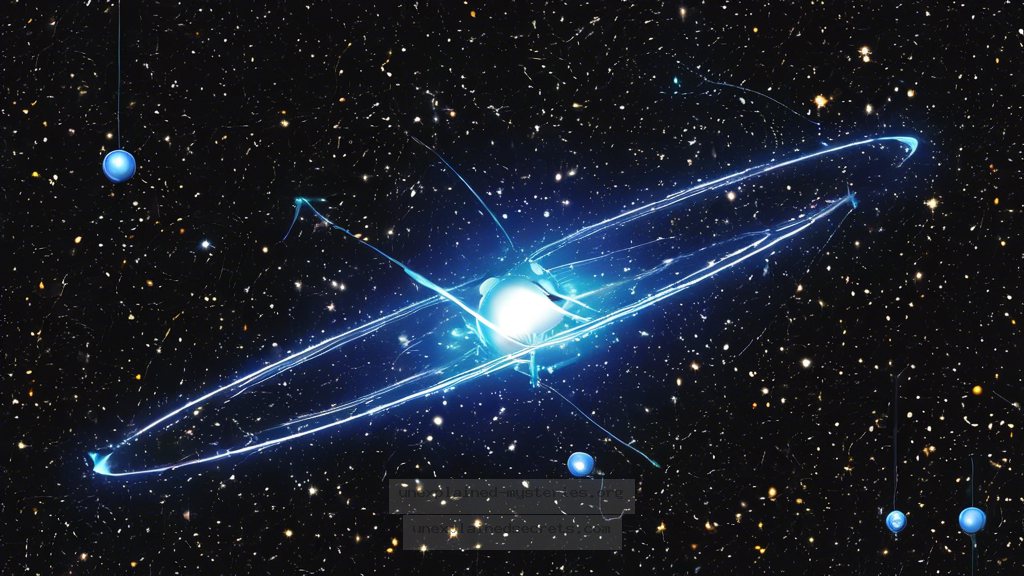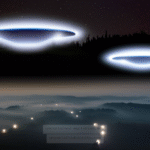What Happened to the Missing Hydrogen in the Universe?
What Happened to the Missing Hydrogen in the Universe?
The universe is a vast, enigmatic expanse that continuously challenges our understanding of physics and cosmology. One of the most perplexing scientific anomalies is the apparent shortage of hydrogen in the observable universe. This question is not just a matter of academic curiosity; it holds profound implications for our understanding of cosmic evolution, the life cycles of stars, and even the fate of the universe itself. In this blog post, we will delve into the mystery of the missing hydrogen, exploring its historical context, core concepts, and the ongoing debates surrounding this intriguing anomaly.
Historical Context of Cosmic Hydrogen
Hydrogen is the most abundant element in the universe, constituting nearly 74% of its elemental mass. It plays a critical role in the formation of stars and galaxies. Since the Big Bang, hydrogen has formed the building blocks of the cosmos, allowing for the creation of helium and heavier elements through nuclear fusion in stars. Early observations in the mid-20th century confirmed the presence of hydrogen in large clouds, but as technology advanced, astronomers began to notice discrepancies between theoretical predictions and observed values of hydrogen in various cosmic structures. This growing realization led to the question: where is all the hydrogen?
Core Concepts Behind the Missing Hydrogen
The concept of “missing hydrogen” primarily refers to the discrepancy between the predicted amounts of hydrogen in the early universe and the amounts we can currently observe. This anomaly is particularly evident in regions of space believed to be rich in hydrogen, such as intergalactic space between galaxies. Various theories have emerged to explain this phenomenon, including:
- Cosmic Inflation: A theory suggesting that rapid expansion in the early universe may have influenced the distribution of hydrogen.
- Dark Matter Interactions: Some scientists propose interactions between dark matter and baryonic matter (ordinary matter) could affect hydrogen visibility.
- Cosmic Reionization: The period when the universe transitioned from opaque to transparent, possibly leading to the dissipation or ionization of hydrogen.
Empirical Evidence and Observational Challenges
The challenge in detecting hydrogen arises from its spectral lines in the electromagnetic spectrum. Astronomers typically observe hydrogen through its Lyman-alpha line, which corresponds to the transition of electrons in hydrogen atoms. However, in many regions of space, especially at vast distances, this line becomes increasingly difficult to detect. Observations from telescopes such as Hubble and the upcoming James Webb Space Telescope aim to capture more of these elusive emissions, but results remain inconclusive.
Moreover, the Cosmic Microwave Background (CMB) radiation provides a snapshot of the universe shortly after the Big Bang, offering insights into the density and distribution of hydrogen. However, discrepancies between CMB data and current hydrogen observations raise further questions. For example, the Planck satellite data suggests a higher density of baryonic matter than what is currently observed, hinting at missing components in our understanding.
Alternative Perspectives on the Missing Hydrogen
As with many scientific inquiries, alternative perspectives exist regarding the missing hydrogen. Some researchers argue that the hydrogen is not “missing” but rather in forms that are difficult to detect. These include:
- Diffuse Hydrogen: Hydrogen may exist in a more dispersed form, making it challenging to identify with existing observational techniques.
- Inaccessible Regions: Some hydrogen could be located in regions of space obscured by dust or gas clouds.
- Intergalactic Medium (IGM): Hydrogen might be present in the IGM, which could affect its visibility based on ionization states.
Common Misconceptions and Clarifications
Several misconceptions surround the topic of missing hydrogen. One common misunderstanding is that scientists believe hydrogen has completely vanished from the universe. In reality, the term “missing” refers to its absence in detectable forms rather than its non-existence. Additionally, while some may think that all hydrogen is concentrated in stars and galaxies, a significant amount resides in the intergalactic medium, where it may be in a low-density state.
Another misconception is that all hydrogen is easily accessible for observation. Factors such as redshift from distant galaxies, cosmic dust, and the ionization state of hydrogen complicate the detection process. Thus, the challenge isn’t merely locating hydrogen but understanding the conditions under which it can be observed.
Best Practices for Investigating Cosmic Hydrogen
For researchers and astronomers aiming to investigate the missing hydrogen, several best practices can enhance the effectiveness of their studies:
- Utilizing Advanced Instruments: Employing next-generation telescopes equipped with advanced spectrographs can improve detection sensitivity.
- Collaboration Across Disciplines: Engaging in cross-disciplinary research that incorporates physics, astronomy, and cosmology can yield fresh insights.
- Modeling and Simulation: Utilizing computer models to simulate cosmic conditions can help predict where missing hydrogen might exist.
Future Developments in Hydrogen Research
As we advance into an era of cutting-edge astronomical research, new instruments and methodologies are expected to shed light on the missing hydrogen mystery. The launch of the James Webb Space Telescope (JWST) represents a significant leap in observational capabilities, allowing scientists to probe deeper into cosmic history and potentially uncover the hidden reservoirs of hydrogen. The JWST’s ability to capture infrared wavelengths will provide insights into the early universe’s structure and composition.
Moreover, upcoming surveys like the European Space Agency’s Euclid mission, designed to map dark energy and dark matter, may indirectly help in locating missing hydrogen by enhancing our understanding of the universe’s large-scale structure.
Conclusion: The Ongoing Quest for Missing Hydrogen
The mystery of the missing hydrogen in the universe continues to baffle scientists and astronomers. As we explore the cosmos and refine our methodologies, our comprehension of this fundamental element and its role in cosmic history will evolve. The ongoing investigations promise not just to illuminate the fate of hydrogen but also to enrich our broader understanding of the universe’s structure and dynamics. Understanding the missing hydrogen is not merely about filling gaps in our knowledge; it is about redefining our place in the cosmos.
As we await new discoveries, the search for missing hydrogen symbolizes the relentless human curiosity that drives scientific progress. Each small insight brings us closer to unraveling one of the universe’s most compelling mysteries.
Other Articles
Recent Posts
- What Happened to Flight MH370? The Conspiracy Theories That Still Haunt Us
- What Secrets Lurk Within the Walls of the Infamous Trans-Allegheny Lunatic Asylum?
- What Evidence Supports the Existence of Bigfoot in the Pacific Northwest?
- What Happened to the Indus Valley Civilization? Unraveling the Mysteries of Ancient Urban Life
- Can Telepathy Be Scientifically Proven Through Laboratory Evidence?







